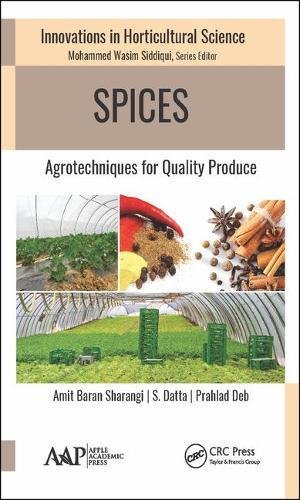

Most ebook files are in PDF format, so you can easily read them using various software such as Foxit Reader or directly on the Google Chrome browser.
Some ebook files are released by publishers in other formats such as .awz, .mobi, .epub, .fb2, etc. You may need to install specific software to read these formats on mobile/PC, such as Calibre.
Please read the tutorial at this link: https://ebookbell.com/faq
We offer FREE conversion to the popular formats you request; however, this may take some time. Therefore, right after payment, please email us, and we will try to provide the service as quickly as possible.
For some exceptional file formats or broken links (if any), please refrain from opening any disputes. Instead, email us first, and we will try to assist within a maximum of 6 hours.
EbookBell Team

4.7
96 reviewsIndian spices are famous across the globe and have attracted food lovers for ages. With the increasing awareness of health through foods, people are now more conscious about the health and nutraceutical benefits of spices. The past few years have witnessed pioneering research work in this area with various spices. This volume is a comprehensive volume that collects and collates the wisdom of the past and blends it with the technological progress of today. The book offers comprehensive coverage on the subject of Indian spices and their agrotechniques. It is a rich compilation of agrotechniques coupled with background information, research work, and scientific discussion on the basic and applied aspects on the subject.
The first chapter in Spices: Agrotechniques for Quality Produce is introductory and provides an overview of spices that have important flavor compounds. It looks at the present status of world spice scenario on export and import, major markets, etc. The second chapter deals with classification of spices, condiments, and herbs. The third chapter is the major one that precisely describes agrotechniques and production technology of fifty individual spices comprised of the major spices. It covers three rhizomatous spices, six bulbous spices, eight tree spices (six aromatic and two acidulant), eleven seed spices, twelve leafy or herbal spices or aromatic herbs, four lesser-known spices, and three other spices with due consideration to quality and value-added benefits. This chapter also presents a general discussion of the systematic position, composition, uses, export-import scenario, medicinal values, etc., of these spices. The subsequent chapters deal with recent research approaches on spices around the world and explore the promises of organic spices and future research directions.
This volume will be useful to all those who are interested in spices, including students, teachers, researchers, amateur readers, policymakers, as well as farming communities.